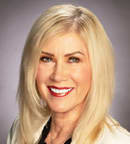With the long-time trend of reduced reimbursement/greater patient demand not going anywhere for the foreseeable future, surgeons are always on the lookout for ways to increase their efficiency. In this article, 3 enterprising ASC veterans offer their best advice on the habits and products that have made the difference for their facilities.
And if you will be attending the 2025 AAO meeting, keep in mind that presentations offer countless ideas to help practices work smarter, as you will see below.

Delegate to Save Time
At one ophthalmology meeting, a surgeon was presenting a case, and Dr. LaBorwit noticed that when she walked into the room, the patient’s eye was already prepped, draped, and ready for her.
“I realized she had saved time just by delegating those tasks,” he says. “When I returned to my OR after the meeting, I couldn’t stop thinking about how I could delegate this step of the procedure too. It only took a minute of my time, but across 30 cases, that was equivalent to my lunch break.”
Determined to implement this time-saving change, Dr. LaBorwit spent 20 cases instructing the scrub nurse in how he would prep, drape, and place the lid speculum. Then he observed her for the next 20 cases.
“This training took time, but now, every day, I come into the OR, do a timeout, and go right to work,” he says. “It was worth the investment of time because it paid dividends exponentially in the long run. Delegating tasks that others could handle with proper training and supervision is crucial for creating efficiency.”
Utilize Tech in Postop Care
During a presentation at another meeting Dr. LaBorwit attended, someone explained how their staff calls patients 4 hours after surgery to check in and review post-op instructions.This tip sparked another idea that Dr. LaBorwit tailored to his practice to create efficiency.
“I took this idea and leveraged technology by having patients receive a text message 4 hours after cataract surgery. This message included a link to a 4-minute video featuring me and my staff explaining post-op instructions, outlining reasons to call us immediately, and discussing normal expectations after the procedure.”
The idea saved Dr. LaBorwit’s staff significant time in unnecessary phone calls while alleviating patients’ anxiety after surgery.
“It was a win-win,” he says.

Ms. Jacobs says that she goes into every eyecare conference with a plan to extract the greatest benefit for the practice.
“I use a ‘divide and conquer’ approach: identify our needs, align with my team (if others are attending), and determine which sessions and vendor booths we’ll cover to maximize value,” she explains. Here are some critical efficiency boosters she gained through her approach.
More instruments = More Efficiency
As the ASC’s Implantable Collamer Lens (ICL) volume increased, staff were hitting a bottleneck with instrument turnover. “We were working with limited sets of ICL instruments, and sterilization turnaround was slowing us down—impacting our surgical schedule and efficiency,” Ms. Jacobs says.
So, just before the next eyecare meeting she and other staff attended, they zeroed in on what the ASC needed in terms of extra instrument sets and the relevant vendors who would be there as well.
“We strategically visited those vendors and purchased additional instrument sets and adjusted our sterilization workflow to match,” she says.
Management also met with staff to review turnover times and the updated protocols.
“Within a month, we saw smoother surgical days with less stress on our team. We increased case volume without compromising efficiency or extending the day—simply by investing in the right equipment and planning smart.”
An Easier Route to “Paperless”
“Our ASC was still running on paper charts, and while EMR isn't a requirement for ASCs, we were feeling the strain,” Ms. Jacobs says. “Paperwork was piling up, charts were time-consuming to create and scan, and administrative burden was increasing.”
On the other hand, ASC leadership had not been able to find an EMR that would not impede efficiency. Then, at a February 2020 eyecare meeting, Ms. Jacobs encountered Shareable Forms.
“It was a lightbulb moment,” she says. “This solution offered the ability to digitize our charting process without the burden of a full EMR system—exactly what we needed.”
When the COVID shut down occurred in March 2020, the ASC used that downtime to implement Shareable Forms.
“By the time we reopened in May, we were live with a more streamlined, paperless workflow,” Ms. Jacobs says. “We reduced paper and supply costs, and eliminated the need for physical chart storage. Our front-desk administrator workload decreased by 30%. Less printing, prepping, and scanning meant more time for patient care and operational support.”
Improved Administrative Compliance Management
The burden of tracking policies, licenses, reviews, logs, and credentialing manually only became more onerous as the practice grew, Ms. Jacobs states. Another worry that came with growth was the potential for something to fall through the cracks that could impact compliance.
“After talking with several colleagues and software reps at another ophthalmic meeting, we discovered Surgilogs.”
When colleagues praised its ability to simplify compliance tracking, documentation, and reporting, Ms. Jacobs recognized it could be the solution they needed. Soon the practice onboarded Surgilogs and uploaded key documentation.
“Once we got everything set up, it was incredibly easy to manage and maintain,” she says. “The platform sends proactive reminders and notifications, which help us stay ahead of deadlines rather than chasing them. We no longer worry about missed renewals or logs.”
Additionally, quarterly reports can now be generated in a fraction of the time it used to take to compile them.
“Don’t underestimate the power of one good tip to move your ASC forward,” Ms. Jacobs says.

Jayne Bacot, MSN, RN, CNOR, CASC, is Director of Nursing & Surgical Services at Ophthalmic Outpatient Surgery Center Partners (OOSCP), LLC d/b/a Ophthalmic Outpatient Surgery Center for Sight
OOSCP is the ASC for clinics as part of Williamson Eye Center, Ms. Bacot explains, and has 2 operating rooms. She estimates they will do more than 6,000 cases this year.
“In terms of efficiency, we have a lot of contact points because we have a pretty high-volume patient flow. And so, we have determined that when you do the same thing over and over again every day, it becomes easy to do. You have to streamline your processes. If you don't have your processes streamlined, it's not going to work.”
For her ASC, she says, effective streamlining comes mainly from the the practices detailed below.
Cross Train to Keep Moving
Because employees calling out sick are always a possibility, especially since the COVID shutdown, Ms. Bacot notes, crosstraining staff becomes critical to optimize efficiency.
“When you cross train, you can fill those spots and make it work. Everyone is helping make sure that we can get the patients in and out safely. We train [individual staff] to the highest level that we can and put them in the right spots so that everything is efficient with patient safety.”
Cross training begins early at OOSCP, Ms. Bacot says. The ASC starts an employee in one particular department, based on that person’s strengths, with an assigned trainer. That training lasts until both instructor and employee feel the employee is ready. Once the employee demonstrates competence and confidence there, Ms. Bacot explains, “we will explore going to the next area. We train through the admitting area, pre-op PACU and then the operating room.”
Plan Ahead and Have a Plan
The next component in OOSCP’s efficiency involves being proactive about likely obstacles. During the team’s daily review of the next day’s schedule, they look for situations that may result in a bottleneck—say, a patient’s blood pressure turns out to be too low to proceed with the surgery, or the patient “failed to tell us that they had been in the hospital so we have to redo their H&P [history and prognosis] and they need to go back to see their doctor to make sure they're cleared for surgery”—and formulate a plan that will allow them to deal with it without impinging on efficiency.
“We assign roles to the strengths of our employees,” Ms. Bacot says. The aim is to enlist key personnel to “try to handle that issue right away, and then have the other teams working to keep the flow moving.”
The result is that any bumps that appear in the road “do not stop our flow.”
Communication Smooths the Way
The sooner your staff are updated to changes, the better things run, Ms. Bacot notes. She recommends weekly meetings and even daily huddles as necessary, such as when there is a sudden change to that day’s routine.
“The more knowledge that [staff] have, the better they are,” Ms. Bacot says. “If we’re going to have a change to the day, everyone’s given a heads up. Say, ‘OK, this is what we’re going to do today. I’ve just found out this.’ You don't want to surprise them about the day that they’re going to have.”
Keeping staff promptly informed means that even when the unexpected happens, staff are less stressed out.
“Because the key is not to rush, but to do things safely and efficiently,” Ms. Bacot says. OASC








